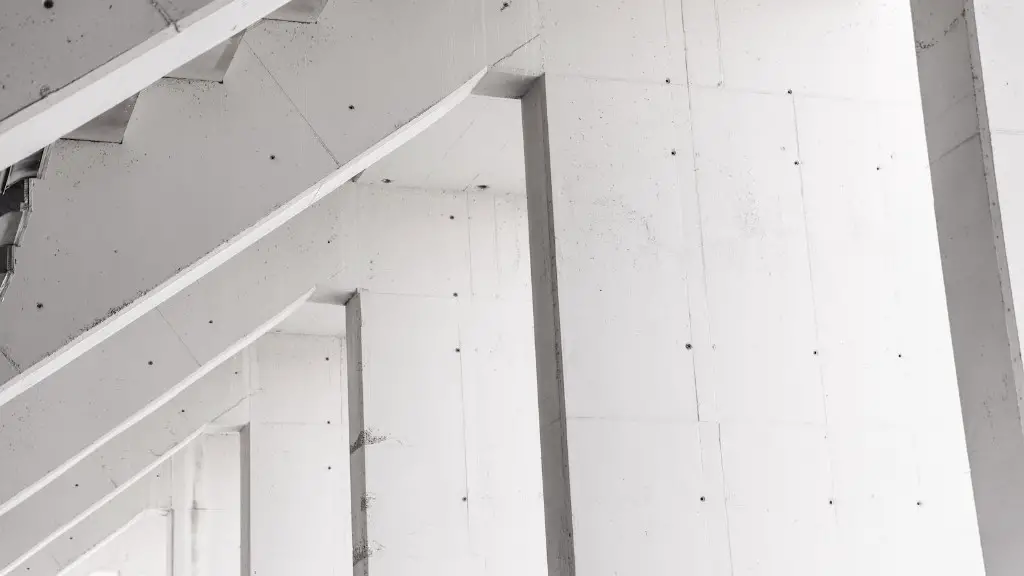Hostile architecture, also known as defensive architecture, hostile urban design, or aggressive architecture, is the intentional design of physical spaces and structures to deter a certain type of behaviour such as loitering, vandalism, or sleeping rough. From benches designed to make sleeping uncomfortable, to spikes on ledges, to fountains with anti-homeless designs, these elements are often used in public spaces to create environments that are less welcoming to certain types of people. Hostile architecture is often derided for promoting exclusion or even cruelty, and is frequently considered as a way of punishing those who cannot afford housing or who find themselves without shelter.
However, proponents of hostile architecture argue that it can be effective in maintaining order and safety in public spaces, preventing vandalism and graffiti, and improving the aesthetics of cities. They say that hostile architecture does not necessarily target homeless people, as it is intended to discourage particular conduct such as loitering, or aggressive behaviour. Moreover, proponents argue that hostile architecture is not designed to harm anyone and can be effective in creating safe and clean environments in which everyone can feel comfortable.
In addition, some experts say that hostile architecture is just one way to tackle the underlying issues of homelessness. It is a symbolic gesture that can be used to draw attention to the importance of providing adequate housing, social services, and support for the homeless. Moreover, it can be seen as a way to discourage the presence of people who are homeless and engage local authorities to take steps to address the underlying issues causing homelessness.
Nevertheless, it is important to recognise the potential dangers of hostile architecture. For instance, hostile architecture can be seen as a form of discrimination against those without shelter, which can lead to further alienation and stigmatisation of homeless people. Furthermore, it can be difficult to determine which types of structures and designs are appropriate for preventing undesirable behaviour, and in some cases, this can lead to the misuse of hostile architecture to target certain groups or behaviours. Finally, critics argue that hostile architecture does not actually address the issue of homelessness, and can simply be used to create an atmosphere of fear and intimidation.
The Impact of Hostile Architecture
Hostile architecture can have far-reaching consequences, affecting both those who experience homelessness and those around them. Homelessness is a complex problem that cannot be solved with a single solution, and hostile architecture should be viewed as one piece of the puzzle. It can be a way to discourage particular behaviours and to keep public spaces clean and safe, but it should never be seen as the sole solution to the problem.
Experts agree that hostile architecture should only be used as a last resort, and in order to be effective, it must be used in conjunction with other strategies to address the underlying causes of homelessness. Furthermore, any hostile architecture solutions should focus on encouraging positive behaviour and provide support and resources for those who are homeless, without criminalising or stigmatising them.
Overall, hostile architecture has the potential to be a useful tool for maintaining order in public spaces, but there are also risks that must be taken into consideration. It is important to understand the impact of hostile architecture and to assess its effectiveness relative to other solutions for addressing homelessness before using it as a weapon against those without shelter.
The Potential of Hostile Architecture
Although hostile architecture has been seen as a controversial tool for tackling homelessness, it can also have positive effects. In some cases, hostile architecture can be used to remind people to keep out of certain areas, but also to create public spaces that are safe and inviting. For instance, designers have started creating ‘welcoming architecture’, which is designed to create more inviting public spaces, providing seating, greenery, and other amenities that can make people feel comfortable and welcome.
Additionally, some design professionals are beginning to focus on the potential of hostile architecture to create living environments that are better connected to the outdoors, providing shade and privacy, or to create spaces that are tailored to particular communities. For example, designs for park benches and walls can be used to create spaces that are welcoming to certain groups, such as senior citizens or teens, or to create spaces that are more accessible for those with disabilities.
Ultimately, hostile architecture has the potential to be used in a positive way to create public spaces that are safe and inviting. Designers must be aware of the potential risks of hostile architecture, and the potential for it to be used to target or discriminate against certain groups. However, when used responsibly, hostile architecture can be a powerful way to ensure public spaces remain inviting and safe.
The Future of Hostile Architecture
As hostile architecture becomes more prominent in cities around the world, cities have started to reconsider their approach to tackling homelessness. More and more cities are developing alternative strategies to address homelessness, including providing supportive housing, creating well-lit public spaces, and providing employment opportunities for those without shelter. By focusing on policy initiatives that are more effective and humane in tackling homelessness, cities can move away from using hostile architecture as a weapon.
In addition, the public has also become more aware of the impact of hostile architecture on the homeless. As cities are rethinking their approach to public spaces, the public has become more vocal in their opposition to the use of hostile architecture. For instance, initiatives have been launched to remove spikes and other inconvenient structures, and to create more inviting public spaces where homeless people can access the resources they need.
Ultimately, hostile architecture has the potential to be an effective tool for maintaining public order. However, city officials must be aware of the potential consequences of using hostile architecture, and of the potential misuse of hostile architecture to target certain groups or behaviours. In addition, the public should be encouraged to recognise the human impact of hostile architecture and to call for more effective and humane strategies for addressing homelessness.
The Debate Around Hostile Architecture
Hostile architecture has become the subject of increasing debate in recent years, with critics arguing that it is a form of discrimination against those without shelter, and proponents arguing that it is an effective way to address certain types of behaviour. In debates about hostile architecture, it is important to recognise that the impact is rarely black and white – there are both pros and cons to its use, and any solution should take into account the complexity of the issue.
In particular, it is essential to look beyond the immediate effects of hostile architecture and to recognise that it is only part of the solution to addressing homelessness. Experts agree that, in order to truly address homelessness, policy initiatives must be implemented that focus on providing adequate housing, social services, and support. Moreover, public engagement should be encouraged in order to ensure that any solutions are tailored to the needs of people in society, not just those with the most power and authority.
Overall, the debate around hostile architecture is complex and multifaceted, and there is no one-size-fits-all solution. It is important to recognise the potential risks and benefits of using hostile architecture, and to ensure that it is used in a responsible and humane way. Ultimately, the goal should be to find solutions that truly address the underlying issues of homelessness.
The Role of Designers in Hostile Architecture
As the debate around hostile architecture continues, it is important to recognise the role of designers in creating and implementing these solutions. Designers should be aware of the potential consequences of hostile architecture and exercise caution in their designs. In particular, designers should seek to create designs that focus on encouraging positive behaviour, enabling access to resources, and making public spaces inviting and safe for everyone.
Furthermore, designers should be encouraged to engage with those in the community to ensure that the designs being implemented are tailored to the needs and perspectives of local people. By working with the community, designers can create designs that are more effective in addressing particular issues and align with the values of the community.
Finally, designers should encourage public dialogue about the use of hostile architecture and use their platforms to challenge views and practices that could lead to a hostile environment. By taking an active role in the debate around hostility architecture, designers can help to ensure that these solutions are used responsibly and humanely.
Conclusion and Summary
Hostile architecture has the potential to be an effective tool for maintaining order in public spaces and discouraging particular behaviours, but it must be used responsibly. The debate around hostile architecture should recognise that it is only part of the solution to addressing homelessness, and focus on finding humane and effective solutions that truly address the underlying issues. Furthermore, designers should be aware of the potential consequences of their designs and engage with local communities to create solutions that are tailored to the needs of local people.





